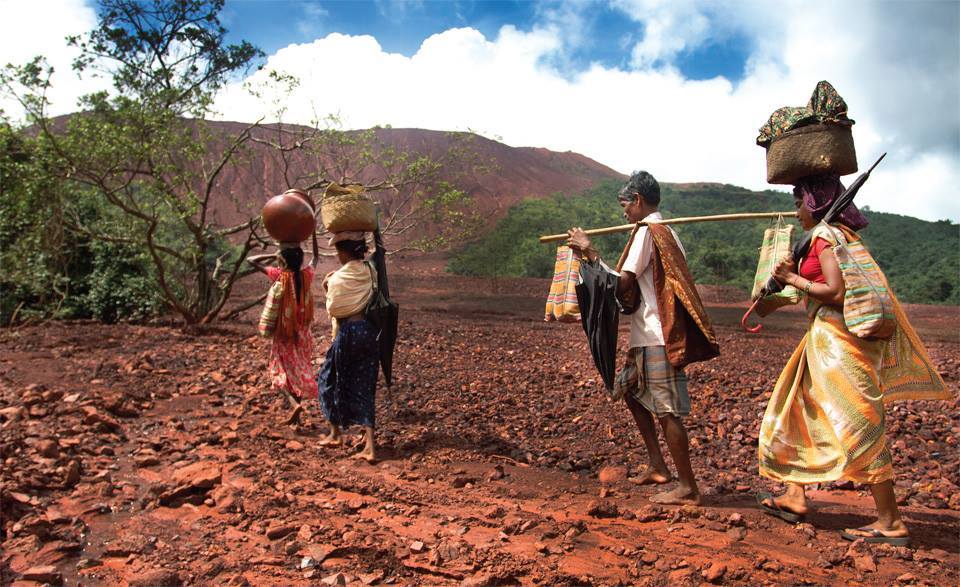Tribal people constitute 8.6 % of India’s total population, about 104 million people according to the 2011 census. Though this is the largest population of the tribals in the world, no separate data on tribal health is maintained. Hence, the basic health problems are still unsolved.
Tribal people in India are called Adivasi (Aka, vanavasi – forest dwellers, or girijan – hill people, in some parts) have remained marginal in terms of geographical, socio-economical, political psyche. This may be due to the low economic, educational factors along with limited or no access to social amenities.
A Triple burden of diseases in Tribal belts
The Ministry of Health and Family Welfare (MoHFW) and the Ministry of Tribal Affairs (MoTA), in October 2013, jointly constituted the Expert Committee on Tribal Health, under the Chairmanship of Magsaysay Awardee Dr. Abhay Bang. They submitted the comprehensive report on Tribal Health in India, which is said to be the first of its kind.
According to the report, it has been suggested that the tribal population in the country faces a triple burden of diseases. There are gaping disparities in health status between tribals and inhabitants of metropolitan areas.
Historically, it has been believed that only communicable diseases are among the most rampant diseases which include malaria and tuberculosis in a majority.
However, the report investigated that there is a rise in the prevalence of non-communicable diseases like diabetes, cancer, and hypertension as well. Though these were considered to be urban and lifestyle diseases, the rapid urbanization, environmental distress and changing lifestyle are seen to be the culprit for the same.
In addition to this, the psychological disorders also contributing to other health problems. Mental illness like addiction is increasing at an alarming pace. The decreased quality of life, educational difficulties, lowered productivity and poverty, social problems, vulnerability to abuse could be some estimated reasons.
Malnutrition and Child mortality were other indicators of poor tribal health mentioned in the report. They also contribute to the worsening of the disease burden.
1. Communicable Diseases
Malaria
The report has revealed that merely 8% of the national population, constitute about 30% of cases of Malaria, more than 60% of Plasmodium falciparum, and as much as 50% of the mortality associated with Malaria.
Tuberculosis
The estimated prevalence of Pulmonary Tuberculosis in the tribal community is significantly higher than the rest of the country. It is counted to be 703 cases vs 256 per 100,000. The older age population remain under-diagnosed and infected for a longer period.
2. Non-communicable Diseases
Hypertension
Tribes are experiencing a higher burden of hypertension and other cardiovascular diseases with advancing time. Apart from lifestyle transition, the factors like gene-environmental interactions and early life influences of fetal under-nutrition are the likely causes for increased burden of CVD in tribal people.
Diabetes
Prevalence of diabetes in tribal areas ranges from around 1% to 10%. According to the literature of diabetes in tribals of India, the numbers detected to be diabetics are 4.13% in tribal and 8.8% in nontribal groups. The total number of diabetics detected in these areas is 4.95%, while 11.57% were in the prediabetic state.
Cancer
Yes, tribe people can die from cancer, but they would never know they had cancer. They don’t do the thorough checks, scans, etc. that we do here in the civilized world. Environmental factors like social milieu, lifestyle, smoking, and addiction to alcohol, etc could contribute to 80% cancers in these areas
3. Mental illness
The tribal populations have greater vulnerability to mental health issues for multiple reasons. The impact of rapid social changes alters their lifestyles, beliefs and community living.
Tobacco: Almost 72% of the tribal men in the 15-54 years age group uses tobacco as compared to nontribal men.
Alcohol: Near about half of the tribal men consume some form of alcohol. Alcoholism is a problem among some tribes. Many tribes make their own home-brewed beers or spirits.
4. Child mortality and Malnutrition
The excess of under 5 mortality in scheduled tribes has widened from 215 to 48%. Pneumonia, Diarrhoea, Malnutrition are the leading cause of deaths in children.
Compared to other social groups, tribal children continue to be the most malnourished. The malnutrition is stunting among the low BMI among adults. The food intake and the intake of proteins, calories, vitamins have decreased in the last decade.
Keynote
Yet, over the decades, significant improvements have taken place. Tribal people are living with the poorest health status with the triple burden of diseases. The primary health care system is characterized by low output and low quality.
Therefore, restructuring and strengthening of the tribal health care system should be the highest priority for the betterment of tribal people.
The committee also recommended some functioning, sustainable and universal system healthcare goals for tribal people, in the next five years, by 2022.
